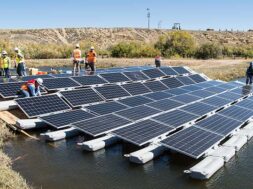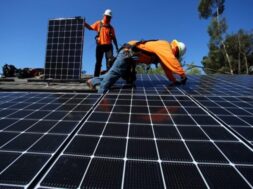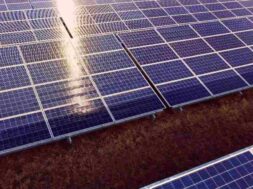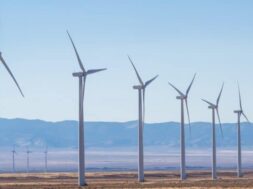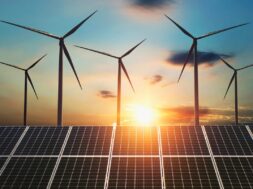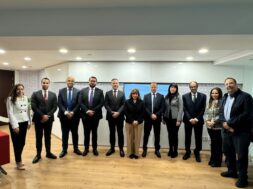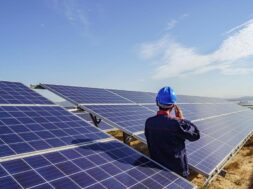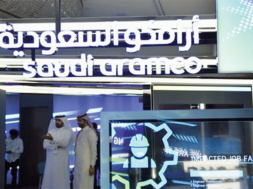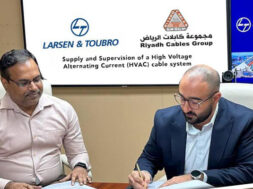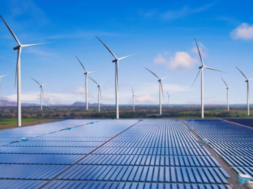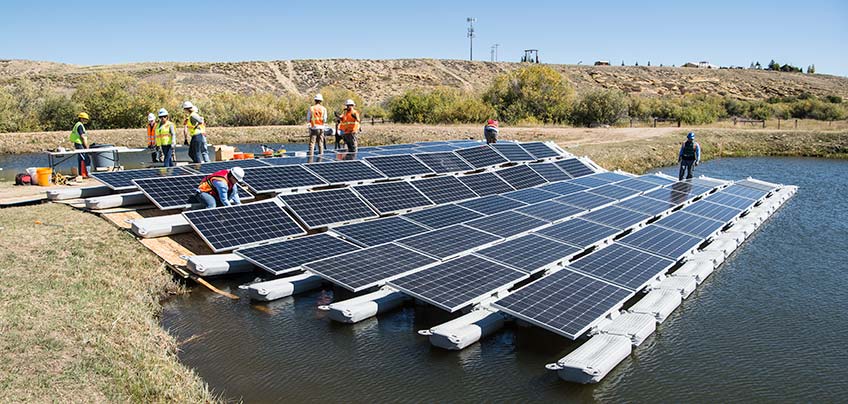
Solar Mini Grids for Ghana
Good news for some of the 32 million inhabitants of Ghana in West Africa. Approximately $58 million will be provided as a grant for off-grid electrical systems. $28 million will come from the African Development Bank (AfDB) through the Climate Investment Funds (CIF) under its Scaling Up Renewable Energy in Low Income Countries (SREP) program. The Ghanaian government will also contribute $16 million and the Swiss State Secretariat for Economic Affairs $13.30 million.
“The Ghanaian government plans to install 35 solar photovoltaic mini-grids and build stand-alone solar systems in 400 schools, 200 health centres, and 100 community energy service systems in the Lake Volta and Northern regions.” Island communities will befit from the installation of 12,000 rooftop solar systems with batteries on small and medium sized enterprises. This work is expected to “close the gender gap in outcomes by creating 2,865 equitable jobs and livelihoods, 30% of which will be for women and youth,” says the Abidjan, Ivory Coast–based financial institution.
Floating Solar Power for Seychelles
The Republic of the Seychelles is an archipelagic nation consisting of 115 islands situated 1500 km off the east coast of the African continent with a population of approximately 100,000 people.
Despite delays, Qair of France is finally making progress on its proposed Providence Lagoon 5.8 MW floating solar plant. Construction is slated to begin in the fourth quarter of 2023. “The floating solar power plant is a game changer for Seychelles, providing a reliable source of renewable energy and contributing to the country’s sustainable development,” said Olivier Gaering, Qair’s Indian Ocean regional manager. The project will contribute to the country’s energy security, and also stimulate economic growth through job creation.
A recently signed PPA with an expected price of 9.5 cents per kWh will run for the next 25 years, expensive electricity compared to the large solar farms being erected in other parts of the world, but it is still a small-scale project and floating solar power is by no means a mature technology. The Providence solar project is supported by the African Development Bank, the Clinton Foundation, Trinity International, and Multiconsult Norge.
Solar Centers in South Africa
Decentral Energy Managers of Johannesburg are getting $12.1 million to expand their project portfolio in South Africa. The company builds solar centers for commercial and industrial clients. South Africa’s energy crisis has led to intermittent load shedding and a dependence on companies like Decentral as Eskom power generation facilities fail due to their age.
The U.S. Agency for International Development is investing in the project under the Power Africa initiative. Decentral has also raised financing from Lions Head Global Partners, Flyt Property Investment, and Anuva Investments.
Decentral aims to develop between 45 and 50 MW of installed capacity, benefiting at least 40 SMEs in South Africa. Decentral currently has 10 MW of installed capacity of solar assets and 500 MW under development.
“Decentral supplies this electricity primarily to customers in the retail, tourism, residential, commercial and industrial sectors. These key job-creating sectors are heavily impacted by load shedding. With the new investments, Decentral expects to contribute to the decarbonization of South Africa’s energy sector by reducing emissions by 328,000 tons of CO2 equivalent per year.”
60 Solar Mini-Grids for Senegal
About a day’s drive from Dakar (of car rally fame) lies the Kolda region of Senegal. In partnership with the German company Gauff Engineering, 60 solar mini-grids have just been commissioned and connected in the area. In order to make productive use of the electricity, the local farmers will also receive electrical pumps for irrigation and machinery for processing agricultural products.
“The mini-grids in the Kolda region are in addition to the 44 installations that have already been handed over and put into operation in the Kaffrine region on the Gambian border.”
Gauff has plans to commission 80 more solar mini-grids in northern Senegal. The mini-grids have capacities between 15 and 45 kW and are equipped with batteries. In addition, 25,000 poles to support 840 km of power lines and 3,600 solar street lights will be installed in the region. The German company is working towards the electrification of 300 villages in Senegal.
The overall cost of 120 million euros is being financed with the support of KfW Ipex-Bank, a subsidiary of the Kreditanstalt für Wiederaufbau (KfW), a German development bank. Supplier credit coverage is provided by the German federal government. Senegal has a population of 17 million people.
Solar Farm for Eritrea
The Eritrea’s Dekemhare solar project (30 MW) will be financed with $49.92 million by the African Development Bank (AfDB) and is expected to almost double Eritrea’s installed power capacity from 185 MW to 365 MW, thus increasing the share of renewables in the grid from 3% to 23%. Dekemhare sits 40 km south of the Eritrean capital Asmara.
The Eritrean government is also planning to build a substation and a transmission line to connect Asmara and Dekemhare. There are approximately 7 million people living in Eritrea. Solar projects are expected to aid in the closing of the energy gap, reduce emissions by 42,910 tons of CO2 equivalent per year, and reduce the cost of electricity generation to 18.5 cents per kWh.
Eritrea is 90 percent dependent on fossil fuels, including diesel for power generation. Part of the AfDB’s funding is to support the technical studies capacity for other renewable energy projects.
It is great to hear good news from an area which features heavily in the media for terrorist attacks and famines.
Solar Power Plant & Batteries for Malawi
Malawi, with a rapidly growing population of 20 million, is seeking the decarbonisation and diversification of its electricity mix. “A 65 MW solar power plant with battery storage will soon be built near the Dwangwa lake area, 165 kilometres from the capital Lilongwe. The project, implemented by the independent power producer Voltalia, recently received a promise of funding from the International Finance Corporation.” This will come after the World Bank Group’s private sector financing institution has “conducted due diligence.”
Currently, Malawians are dependent on hydropower and energy imports from neighbouring countries. Climate change has impacted the amount of electricity that can now be produced by hydropower.
“Voltalia has 2.6 GW of generation capacity in operation and under construction and a portfolio of projects under development with a total capacity of 14.2 GW. The innovative project will have a particularly important positive impact on local development as it represents almost 10% of Malawi’s installed capacity,” says the French company headed by Sébastien Clerc.
According to the World Bank, only 15% of the population of Malawi has access to electricity in a country battling natural disasters and a cost-of-living crisis. The Malawian authorities are turning to solar for a solution.
As these developing countries install more renewable energy, it is hoped that they can forego adoption of many fossil fuel powered vehicles and move straight to battery electric. As the news summary above demonstrates, each African country is at a different stage of development and has different needs. For some, electrifying transport might be quite some way in the future as they struggle to feed their people. Without a doubt, though, solar power and batteries are being seen as key solutions to electricity needs in Africa.
